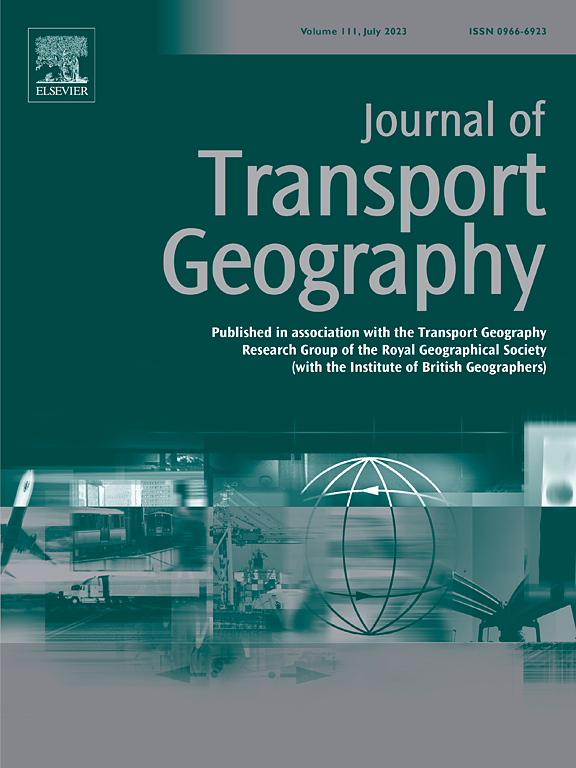Barriers and facilitators to urban mobility for older adults in LMICs: A scoping review
IF 5.7
2区 工程技术
Q1 ECONOMICS
引用次数: 0
Abstract
The number of people aged 65 and older is projected to double by 2050, with the highest increases expected in Low and Middle-income countries (LMICs). This study aims to examine the main barriers and facilitators affecting older adults' mobility in urban areas of LMICs. A scoping review of peer-reviewed scientific literature and grey literature was conducted between January and March 2024. We screened five major databases (PubMed, Web of Science, Scopus, ProQuest, and Google Scholar) for studies reporting barriers and facilitators affecting older adults' access to mobility in LMICs. Using deductive content analysis and the Theoretical Domains Framework (TDF), barriers and facilitators were categorized into behavioral determinant domains spanning four overarching categories: individual, socioeconomic, place-based, and institutional. Forty-four articles from Asia, Africa, and Latin America met the inclusion criteria and were retained for data extraction. Safety concerns, exacerbated by inadequate infrastructure and unsafe road user behavior, represent significant barriers, while gender norms specifically restrict older women's mobility. Conversely, key facilitators include familial support and intergenerational solidarity, subsidized transport, and specific government interventions. Older adults' mobility in urban areas of LMICs is affected by safety concerns, especially for women, and a lack of appropriate infrastructure and reliable public transportation options. These barriers result in limited outdoor mobilities, potentially leading to social isolation and exclusion. These challenges can be overcome through specific interventions that promote more affordable, reliable, and safer public transportation and improved walking options.
中低收入国家老年人城市流动的障碍和促进因素:范围审查
预计到2050年,65岁及以上人口数量将翻一番,预计低收入和中等收入国家的增幅最高。本研究旨在探讨影响中低收入国家城市地区老年人流动性的主要障碍和促进因素。在2024年1月至3月期间,对同行评议的科学文献和灰色文献进行了范围审查。我们筛选了五个主要数据库(PubMed、Web of Science、Scopus、ProQuest和谷歌Scholar),以获取影响中低收入国家老年人获得流动性的障碍和促进因素的研究。利用演绎内容分析和理论领域框架(TDF),将障碍和促进因素划分为四个行为决定因素领域:个人、社会经济、地点和制度。来自亚洲、非洲和拉丁美洲的44篇文章符合纳入标准,并被保留用于数据提取。基础设施不足和不安全的道路使用者行为加剧了安全问题,构成了重大障碍,而性别规范具体限制了老年妇女的行动。相反,关键的促进因素包括家庭支持和代际团结、交通补贴和具体的政府干预。低收入和中等收入国家城市地区老年人的流动性受到安全问题的影响,特别是对妇女,以及缺乏适当的基础设施和可靠的公共交通选择。这些障碍导致户外活动受限,可能导致社会孤立和排斥。这些挑战可以通过具体的干预措施来克服,促进更实惠、可靠和更安全的公共交通和改善步行选择。
本文章由计算机程序翻译,如有差异,请以英文原文为准。
求助全文
约1分钟内获得全文
求助全文
来源期刊

Journal of Transport Geography
Multiple-
CiteScore
11.50
自引率
11.50%
发文量
197
期刊介绍:
A major resurgence has occurred in transport geography in the wake of political and policy changes, huge transport infrastructure projects and responses to urban traffic congestion. The Journal of Transport Geography provides a central focus for developments in this rapidly expanding sub-discipline.
 求助内容:
求助内容: 应助结果提醒方式:
应助结果提醒方式:


